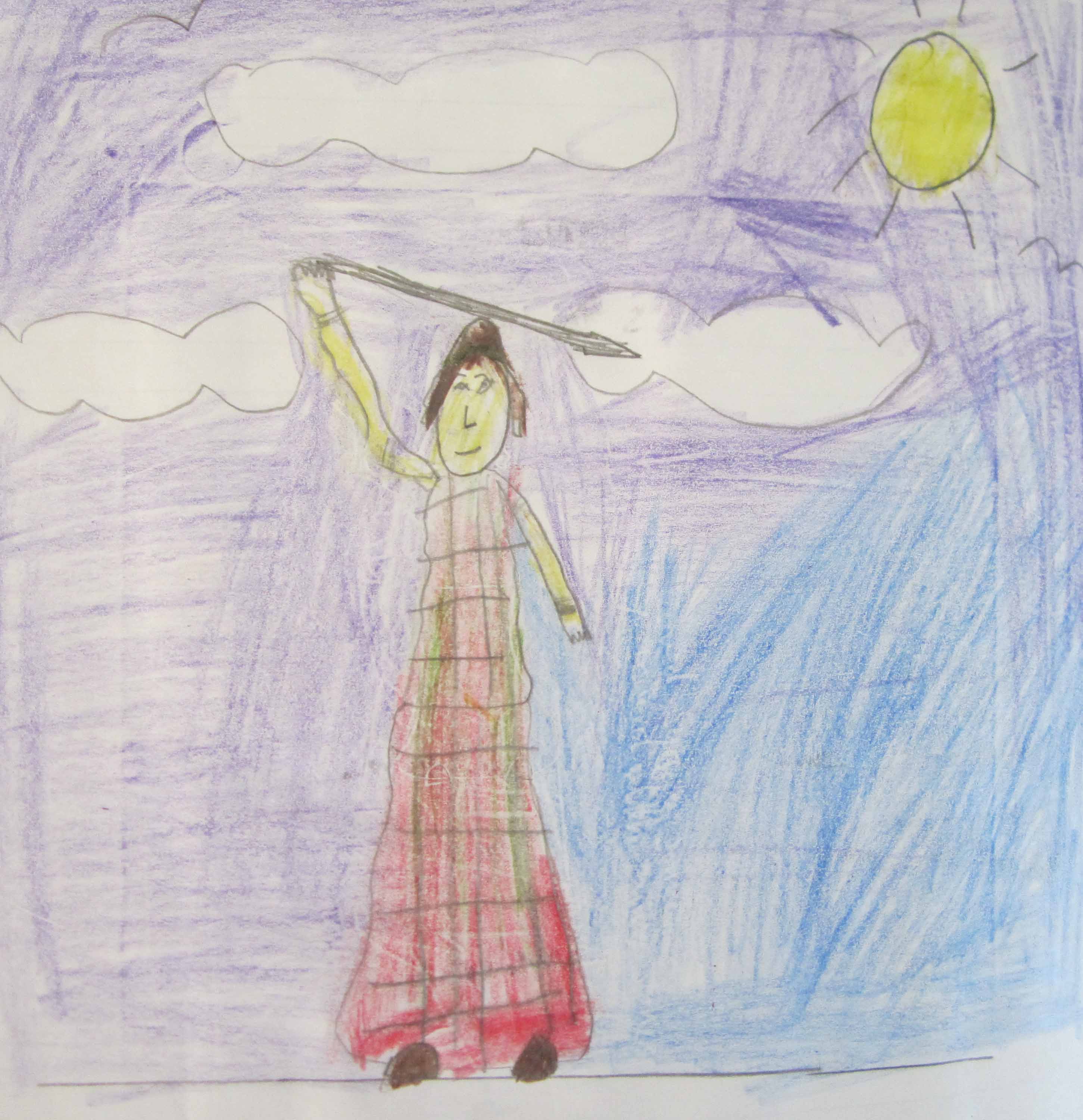If you’ve ever noticed your child’s creations have colours which might not be ‘correct’, like the one on the left, then there’s a reasonable chance they could have colour vision problems.
In the image our young colour blind artist has used both blue and purple to colour the sky blue, without noticing they have used purple. They also intended Boudica’s dress to be brown, but they have used red and green instead, again without realising. Green and yellow for skin colours are also a common mix up. Our Boudica has yellow skin.
Colour blind children can find these mistakes very embarrassing and it can affect their confidence, especially in school. See the Advice sheets above for tips on how to help your child avoid making unintended colour choices in drawings and school work.
However, if you have a younger child (under 5) who seems to be slower at learning colours than you would like – DON’T PANIC!
First read this article from Scientific American magazine then try to re-think the way you present colour information to see if that improves progress.
If your child is still struggling with some colours – especially confusing blues with purples or reds with greens/oranges/browns then it is more likely they might be colour blind.

